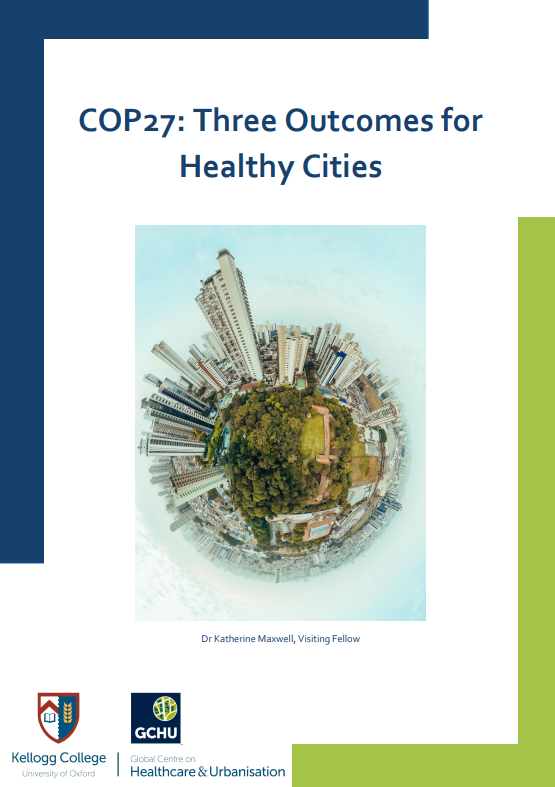Dr Katherine Maxwell, (Visiting Fellow, GCHU, Kellogg College and Associate Director, Net Zero Cities, WSP)
Email: [email protected]
In November 2022, thousands of delegates from around the world descended on Sharm El-Sheikh, Egypt for the 27th Conference of the Parties to the United Nations Framework Convention on Climate Change (COP27). Countries came together to act on achieving global climate goals as agreed under the Paris Agreement and the Convention. At COP27 this year, there was a distinct shift from mitigation (decarbonisation) towards adaptation and enhancing resilience of countries, cities, and communities.
Increasingly, the impacts of climate change are felt at local level, with cities exposed to extreme weather events, increasing temperatures, sea-level rises, and biodiversity loss. In turn, cities are continually contributing to climate change and produce around 70% of global carbon emissions; they are also directly impacted by a changing climate. Urban areas play a critical role in addressing climate mitigation and adapting to better manage climate impacts.
Debate at COP27 on climate change and its impact on urban populations must consider the importance of global public health and how this is directly linked with/to our climate and wider environment. Within cities, the environment-health nexus requires urgent attention within climate action plans. Both global north and south cities are starting to include health considerations within climate actions (e.g., the strength of health systems) especially after the impact of COVID-19.
This paper summarises the key findings from COP27 discussions and explores what these mean for developing ‘Healthy Cities’ – urban areas that positively improve health and well-being of residents, whilst reducing carbon emissions and strengthening urban resilience.

